Last-Minute NYC Holiday Gift Guide 🎁
We’ve created a holiday gift guide with presents for the intrepid New Yorker that should arrive just in time—


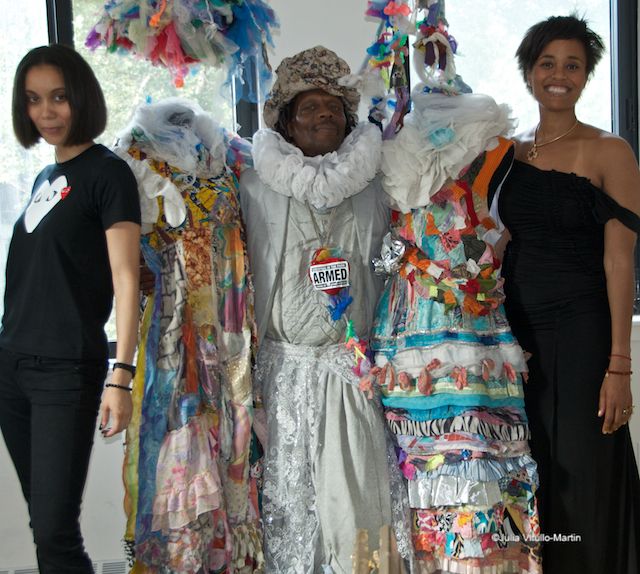
The principals of the Sugar Hill Culture Club: Imani Razat, Wendell Headley, and founder Felicia Gordon.
This is New York City’s summer of sugar—first Kara Walker’s Subtlety, or the Marvelous Sugar Baby at Brooklyn’s Domino Sugar Refinery, and now the entirely different, appealing “If You Build It” exhibit honoring Harlem’s Sugar Hill neighborhood in all its complexity. Once the storied home of African-American giants—Duke Ellington, Cab Calloway, Joe Louis, Thurgood Marshall and many more—as well as George Gershwin and Babe Ruth (the neighborhood is directly across the Harlem River from Yankee Stadium), Sugar Hill declined precipitately after World War II. Many of its handsome buildings were demolished, and others stripped naked of their limestone embellishments as they were cut up into tiny living quarters. Vacant lots marred even good blocks. The corner of St. Nicholas Avenue and 155th Street was one of the emptiest of all—high up on Coogan’s Bluff but forlorn, with a toxic history.
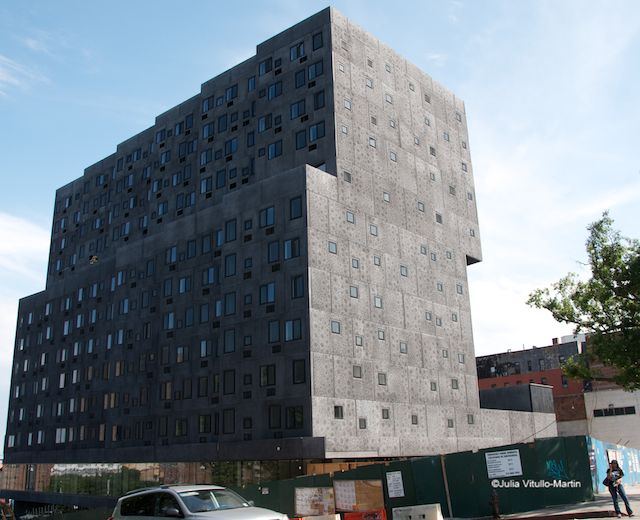
Renowned global architect David Adjaye designed the Sugar Hill apartments for Broadway Housing Communities.
Thus, when nonprofit developer Broadway Housing Communities decided to celebrate the construction of their David-Adjaye-designed apartment building for low-income families, they couldn’t have found a more appropriate arts organization than No Longer Empty, which specializes in site-specific art. With a mission of building resilience in communities through art while widening its audience, No Longer Empty has brought together the work of established artists like Radcliffe Bailey and Hank Willis Thomas along with brilliant unknowns and youngsters. The result is disconcertingly exuberant but well-worth seeing.
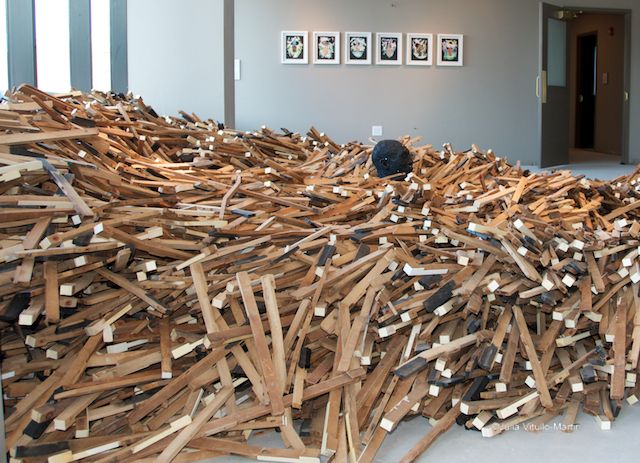
Radcliffe Bailey’s “Windward Coast” is made of piano keys, a plaster bust, and glitter.
It would be hard to exaggerate the power of Radcliffe Bailey’s sculptures. Often recycling old materials, such as the piano keys above, he grapples with the traumatic vividness of the African-American imagination, calling on the extraordinary musical heritage of jazz and the blues, recognizing that the legacy of slavery is never far from the surface. His bronze statue of W.E.B. DuBois, called Pensive, sits alone in a corridor, perhaps appropriately for the man who articulated “double consciousness,” reflecting on the duality of African-American identity by which many only see themselves through the eyes of others. A one-time resident of Sugar Hill, DuBois was a restless traveller, moving to Ghana in 1961 to write an Encyclopedia Africana. He died two years later and is buried in Accra.
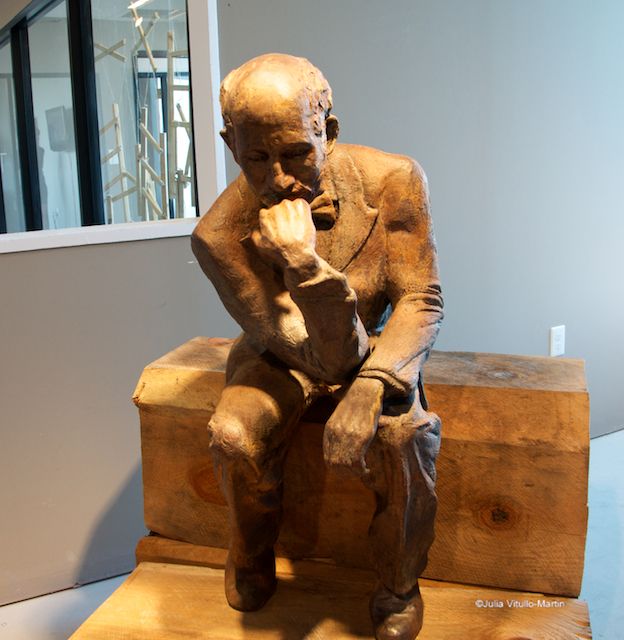
Radcliffe Bailey’s statue of W.E.B. DuBois helps remind visitors of Sugar Hill’s past.
But “If You Build It” also has plenty of room for fun. There’s Scherezade Garcia’s hilariously stacked inner tubes and life savers that have been dipped in gold paint to mimic an altar to immigrants and their hopes. Calling the piece “Cathedral/Catedral” she has attached prayer cards (milagros) in multiple languages to reflect not only the diversity of American immigration but the supplications before the altar. Cleverly sited on a wraparound terrace facing the now strongly Latin neighborhood of Washington Heights, Cathedral/Catedral encourages New Yorkers to laugh, but also to ponder the nature of their ever-changing city.
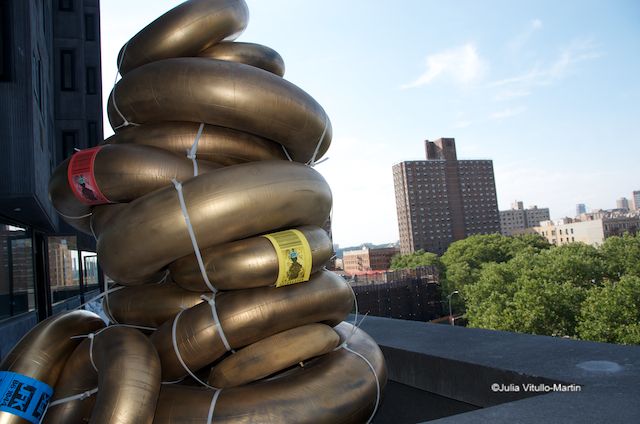
Scherezade Garcia’s “Cathedral/Catedral” stands on the southern boundary of Washington Heights.
It’s possible, though, that few artists have as much fun as the collaborators of the Sugar Hill Culture Club. Wendell Headley, who calls himself a fashion outsider, has found an extraordinary partner in photographer Felicia M. Gordon. In a series of artworks and photographs entitled “New York, Naturally,” they sweetly examine the city’s natural habitat and its inhabitants. Probably no inhabitant, however, is likely to be more enchanting than Headley himself.
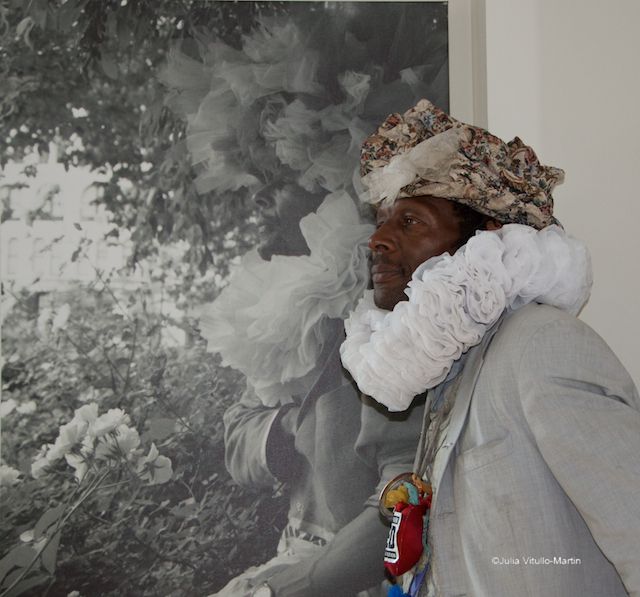
Artist Wendell Headley standing in front of a photo of himself by Felicia Gordon.
Calling on the Latin tradition of murals drawn “In Loving Memory,” Raúl Ayala has drawn great black female writers of the early 20th century, including Gwendolyn Bennet and Ethel Caution Davis. New Yorkers who admire the murals chalked but eventually destroyed on sidewalks will be grateful to see these on a protected wall.
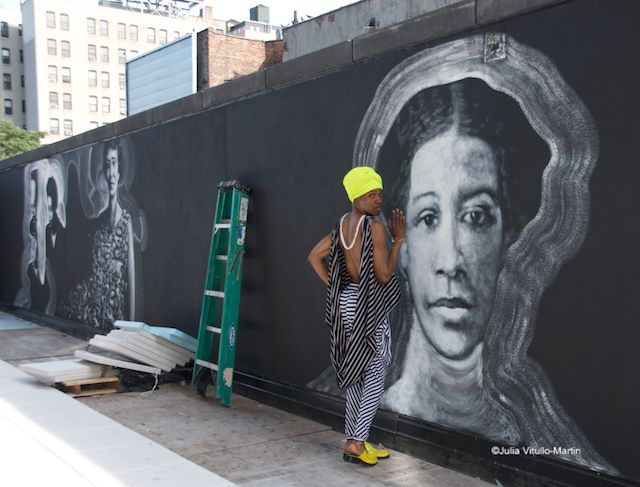
Creative Director Soleo in front of Raúl Ayala’s murals of great black writers.
Then there’s the amazing work of the young artists, presented by ArtsConnection’s “Teens Curate Teens” program as “Rose from the Concrete.” A jaded visitor to curated shows might at this point sigh, but that would be a mistake. These pieces are impressive in any terms. (Nice touch by the way in the title, charmingly punning Sugar Hill’s alternative name as the Heritage Rose district).
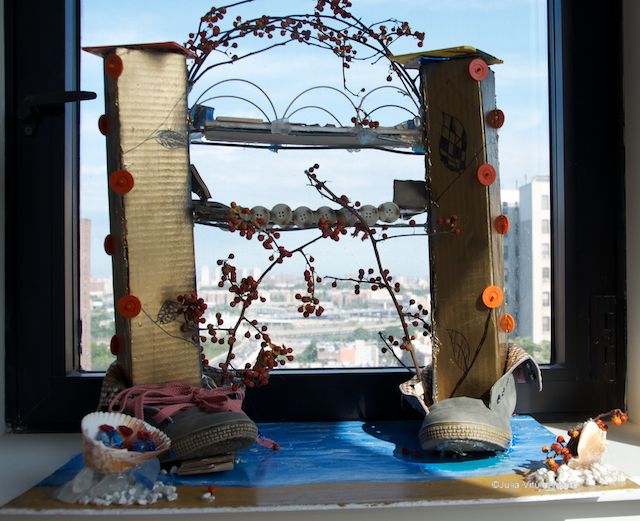
Creators of the “Shoe Bridge,” Rehana Akthar and Tabitha Funes are students at the High School of Economics and Finance.
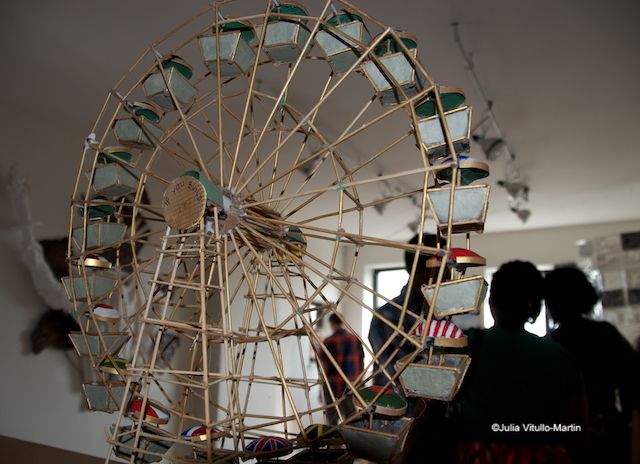
“Flag Wheel” by Ewa Nowogorski, a student at Fiorello LaGuardia High School.
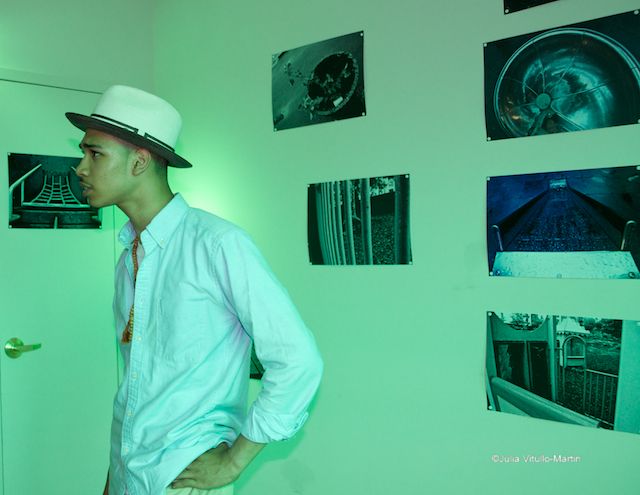
Adonys Jimenez’s green-tinged, multi-media “Empty Benches.”
We said good-bye to “If You Build It” outside, pondering what is probably the exhibit’s most photographed artwork, “New York Sugar Metropolis” by Irish sculptors Brendan Jamison and Mark Revel. The two Irishmen have accomplished something many Harlemites have longed for and deserved: returning some glitter to this renowned African-American neighborhood.
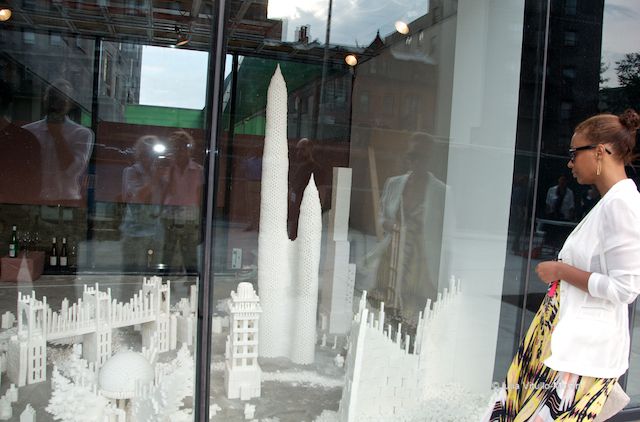
New York Sugar Metropolis by Irish sculptors Brendan Jamison and Mark Revel.
If You Build It opens June 26, 2014, and closes on August 10, 2014.
Hours: Thursdays & Fridays, 3-7 PM; Saturdays & Sundays, 1-6 PM
Where: 155th Street & St Nicholas Avenue
Getting there: the C train to 155th Street
Julia Vitullo-Martin is a Senior Fellow at the Regional Plan Association. Get in touch with her @JuliaManhattan.
Subscribe to our newsletter